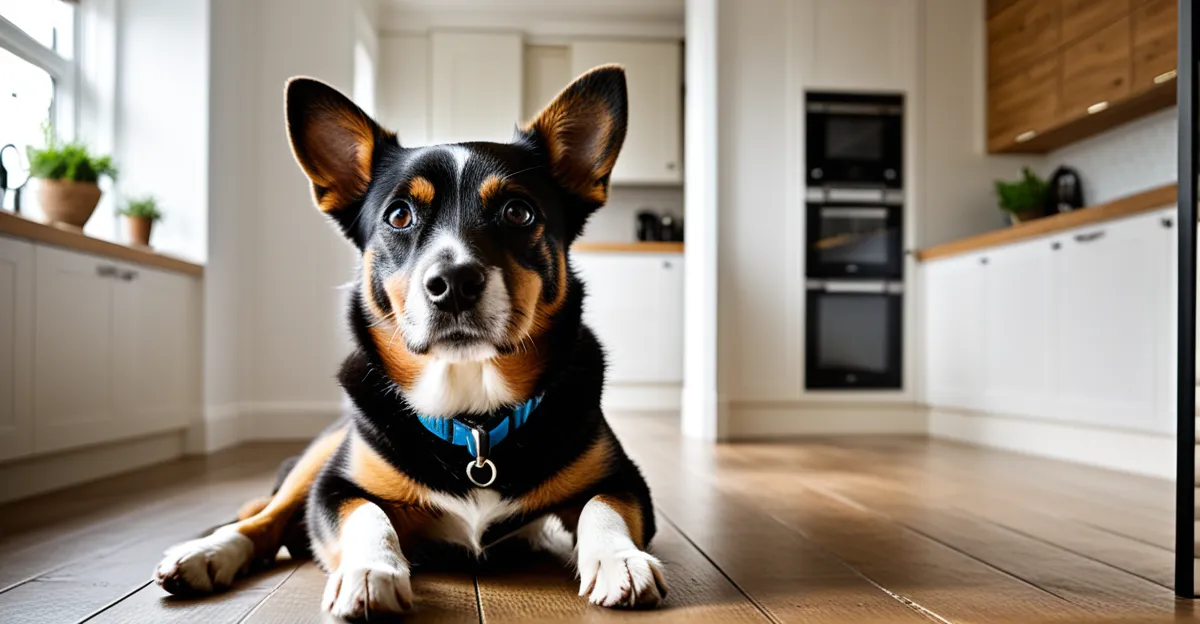Essential Steps to Pet-Proof Your UK Home
Pet-proofing your UK home is essential to ensure pet safety and prevent accidents caused by common household hazards. The first step is identifying risks such as exposed electrical wires, cleaning chemicals, and small objects that curious pets might ingest or chew. Electrical wires should be secured using cable protectors or hidden behind furniture to avoid shocks or choking hazards.
Chemical storage demands attention: always keep cleaning products in locked cupboards or on high shelves inaccessible to pets. Even ordinary household items like batteries or small toys pose ingestion risks for dogs and cats and must be stored safely.
Additional reading : How Can You Add More Personality to Your Home Decor?
Creating block-off zones is a practical method to restrict access to dangerous areas. Safety gates or barriers can keep pets away from kitchens or rooms with hazardous materials. For example, blocking off a utility room where toxic substances are stored is a straightforward pet-proofing tactic that significantly reduces the risk of accidental poisoning.
By thoroughly auditing the home environment for these hazards and securing potential dangers, UK pet owners make their residences safer and more welcoming. Proper pet-proofing not only protects pets but also gives owners peace of mind, promoting a harmonious household where pets can explore without harm.
In parallel : What are effective ways to soundproof UK apartments?
Selecting Pet-Friendly Materials and Furnishings
When considering pet-proof furniture and furnishings, UK pet owners should prioritize durable materials suited to withstand typical wear and tear from claws and chewing. Flooring options such as vinyl, tile, and sealed hardwood offer resilience and ease of cleaning, making them ideal for pet-friendly homes. Carpets, while cozy, tend to trap pet hair and odors, so choosing low-pile or stain-resistant varieties helps maintain hygiene.
For upholstery, selecting fabrics that are claw-resistant and washable significantly contributes to pet-proofing your home. Materials like microfiber, leather, or tightly woven textiles minimize damage from scratching and facilitate easier removal of fur during cleaning routines.
Beyond durability, creating relaxing zones tailored to pets’ needs enhances comfort and wellbeing. Investing in appropriate beds or mats designed for dogs, cats, or other pets in UK homes encourages restful behavior and provides a sense of security. These designated areas also reduce furniture damage by diverting pets to their personal spaces.
Thoughtfully chosen, pet-friendly furnishings contribute not only to maintaining a pristine home environment but also promote pet safety and contentment amidst everyday activity.
Minimising Hazards and Promoting Safety
Securing your UK home for pets involves actively reducing household hazards that threaten pet safety. Installing safety gates at stairways and room entrances effectively controls pet movement, preventing falls or access to unsafe areas. Similarly, window screens act as physical barriers to avert accidental escapes or dangerous falls, especially for curious cats.
Toxic plants commonly found in UK homes and gardens—such as lilies, azaleas, and oleander—pose severe poisoning risks. Removing or relocating these plants ensures a safer environment. Additionally, certain human foods like chocolate, grapes, onions, and xylitol-containing products are toxic to pets and should be strictly kept out of reach.
For pet identification, collars with ID tags are fundamental. However, microchipping offers a permanent form of identification vital to UK pet safety. UK regulations mandate registering pets with the appropriate local authority database, improving the chances of recovery if a pet becomes lost. Combining visible collars with microchips maximizes pet security in residential settings.
Together, these precautions create safe UK homes for pets by controlling access to hazards and ensuring quick identification, thereby reducing accidents and enhancing overall wellbeing.
Legal and Rental Considerations in the UK
Navigating UK pet rental laws is a crucial step for pet owners looking to rent properties. While there is no outright ban on keeping pets in UK rentals, tenancy agreements frequently include specific pet clauses. Understanding these clauses is essential; they often outline whether pets are allowed, restrictions on pet types or sizes, and any conditions tenants must meet.
Securing landlord permission beforehand is necessary to avoid breaches of contract. Tenants should engage in open communication with landlords to negotiate pet clauses that protect both parties’ interests. This negotiation can sometimes result in agreed terms on pet behaviour management or property maintenance responsibilities.
Pet deposits have become common as a financial safeguard for landlords against potential damage caused by pets. These deposits, separate from the standard tenancy deposit, cover repairs or extra cleaning attributable to pets. Familiarising yourself with the limits and conditions related to pet deposits under UK law helps ensure fairness and clarity in rental agreements.
By thoroughly understanding these legal and tenancy considerations, UK pet owners can confidently rent homes that accommodate their pets while respecting landlord requirements and legal frameworks.





